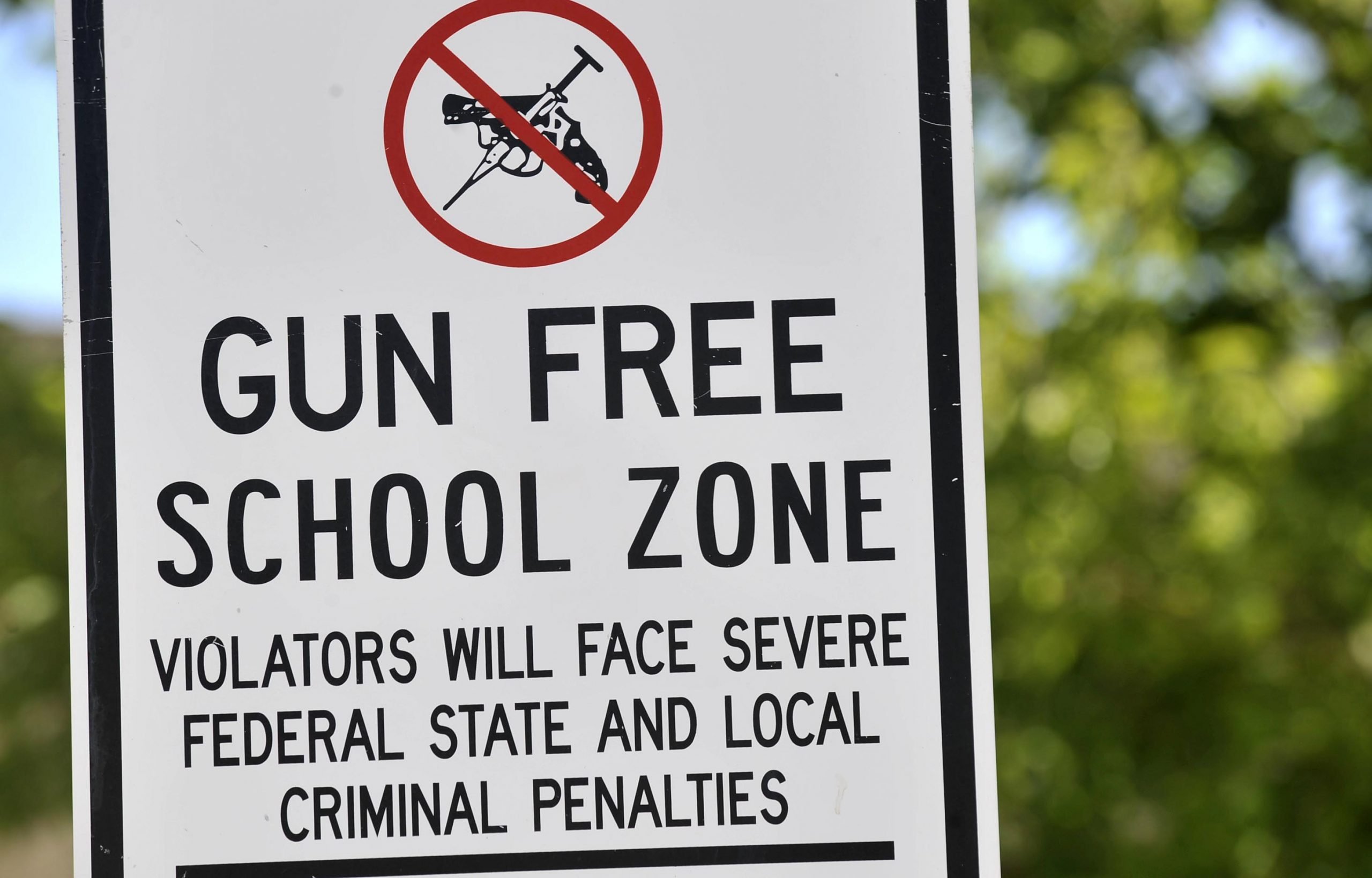Throughout his candidacy, President-elect Donald Trump claimed that mass shooting victims, both in the U.S. and abroad, could have prevented massacres had they been armed.
“The problem with gun-free zones is it’s like offering up candy to bad people,” he told CNN in May. “They hear gun-free zones and they go in there with their guns blazing.”
Trump’s view that gun free zones invite attacks is an echo of a talking point popularized by the National Rifle Association after the 2012 Sandy Hook shooting. In the wake of that massacre, the group called for lifting restrictions barring firearms in public schools and other places where they are banned. “The only thing that stops a bad guy with a gun is a good guy with a gun,” the organization’s chief executive, Wayne LaPierre, intoned.
In the years since, the NRA has successfully backed efforts to lift restrictions on carrying guns in bars and churches in Georgia, carrying firearms without a permit in a purse or bag in Mississippi, and leaving them locked in cars in Florida and Tennessee.
The issue of gun-free zones is particularly charged at America’s colleges, where, over the last nine years, eight state legislatures have approved so-called “campus carry” laws, which allow licensed concealed carriers to bring guns onto university grounds. Similar proposals are expected in at least two states during the next legislative session, including Ohio, where a student armed with a knife stabbed 11 people on the grounds of Ohio State University on Monday. Gun rights groups claim that more guns on campus can save lives — and argue that banning them puts students in danger.
A study published last month tests the merits of this theory. Researchers from Johns Hopkins Bloomberg School of Public Health, Stanford University, and the University of Massachusetts Boston aimed to determine whether concealed carry on college campuses would reduce or increase violence. Because campus carry is a relatively new phenomenon, and there exists so little data on its public safety impact, the academics examined previously published research on rampage shootings in public spaces.
The study’s authors found that the vast majority of high-casualty mass shootings have happened in places where guns are allowed, or at least not explicitly banned.

“Policies that allow individuals to bring firearms onto college campuses are unlikely to lead to fewer mass shootings or fewer casualties from those shootings,” the report reads.
The study draws from research conducted by one of its authors, Louis Klarevas, who in his book, Rampage Nation: Securing America from Mass Shootings, examined 111 shootings between 1966 to 2015 that left six or more people dead. Of these gun massacres, 93 occurred in gun-allowing zones, or places where there is no evidence that civilian guns are banned.
Klarevas’s research also found that armed civilians almost never prevent or stop rampage attacks — no matter where they occur.
“Successful civilian uses of guns to stop a mass shooting were incredibly rare and about as common as armed civilians being shot while attempting to respond to mass shooting incidents,” the report reads.
The findings are consistent with a 2013 FBI study of 160 active shootings between 2000 and 2013. The review unearthed a single attack that was stopped by an armed civilian — a U.S. Marine. But 13 percent of those shootings were interrupted by unarmed civilians, the FBI found.
A much broader examination of defensive gun use comes from the Department of Justice’s National Crime Victimization Survey. The survey finds that about 100,000 people report using a gun in self-defense each year, affecting just less than 1 percent of all violent crime victimizations. One analysis of the NCVS results found no advantage to defensive gun use over other methods of self-defense.
The Johns Hopkins study warns that introducing more guns on campus could have the unintended consequence of risking the safety of the students and faculty that gun-rights supporters say they are there to protect. Research shows that college students are at an increased risk for suicide and prone to impulsive behavior. One report, cited by the authors, found that firearms were the most common means of suicide among males, accounting for for almost a third of suicides by college students of that demographic. College students are also susceptible to risky behaviors — such as alcohol or drug abuse — which have strong associations with increased levels of violence.
“Mass shootings are a growing concern, but are still very rare events,” the report says. “Increasing gun availability in campus environments could make far more common acts of aggression, recklessness, or self-harm … and have a deleterious impact on the safety of students, faculty, and staff.”
[Photo: AP Photo/Amarillo Globe-News, Michael Schumacher]

